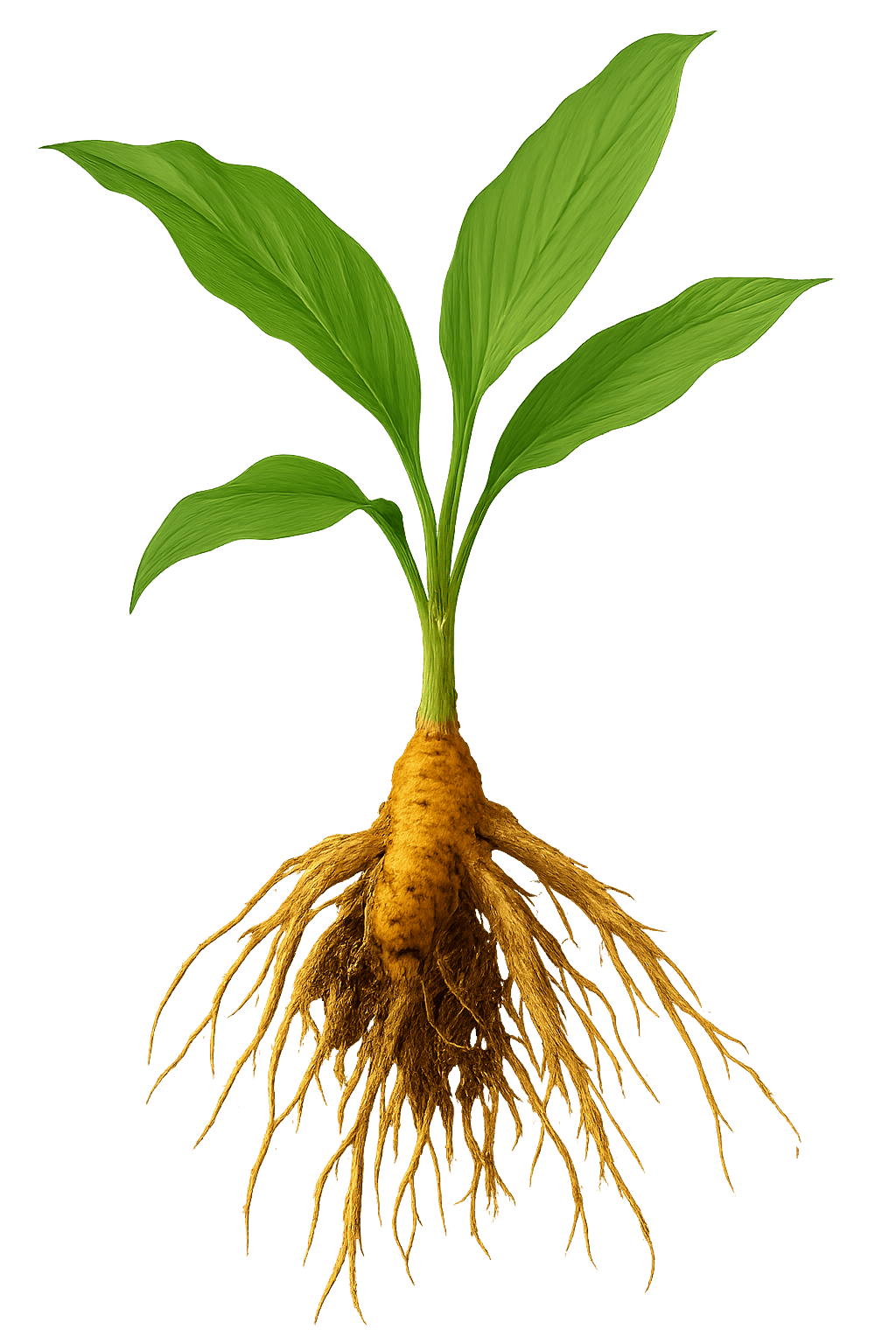Turmeric
Turmeric Detailed Encyclopedia
Turmeric is a commonly used blood-activating and stasis-removing Chinese medicinal herb, with effects of breaking blood and moving qi, unblocking meridians and stopping pain. Originating from India and Southeast Asia, now widely cultivated in Sichuan, Fujian, and Guangdong of China, it is an important blood-activating herb in traditional Chinese medicine and an important food spice.

Basic Information
Family:Zingiberaceae
Scientific Name:Curcuma longa
Origin:Sichuan, Fujian, Guangdong, Taiwan of China
Harvest Period:Winter (December-January)
Growth Years:1 year
Plant Height:1-1.5 meters
Morphological Characteristics
Leaves:Large oblong leaves, alternate, entire, green
Flowers:Spike inflorescence, yellow or white flowers, blooming August-November
Roots:Thick rhizome, ovate or cylindrical, deep yellow cross-section, aromatic
Stem:Pseudostem formed by leaf sheaths
Growth Environment
Soil Requirements:Fertile sandy loam or clay loam, pH 5.5-7.0
Water Requirements:Moisture-loving, keep soil moist during growth
Light Requirements:Sun-loving, requires full sunlight
Temperature Requirements:20-30°C, not cold-tolerant, stops growing below 15°C
Humidity Requirements:Relative humidity 70-85%
Classification & Varieties
Main Varieties
Processing Types
💊 Medicinal Value
Nature & Taste:Pungent, bitter, warm
Meridian:Enters Spleen, Liver meridians
Main Efficacies
- •Breaks blood and moves qi, suitable for qi stagnation and blood stasis, chest and abdominal distension and pain, dysmenorrhea and amenorrhea
- •Unblocks meridians and stops pain, improves traumatic injuries, rheumatic pain
- •Promotes blood circulation and removes stasis, treats bruises and swelling
- •Clears heart and cools blood, treats heat entering pericardium
- •Anti-inflammatory and antioxidant, protects liver, enhances immunity
Active Ingredients
📖 Usage Methods
Dosage
- •Decoction: 3-10g
- •Powder: 1-3g
- •Stew: Add to dishes as spice and medicine
- •Tea: Slice and steep in water
⚠️ Contraindications
- •Use with caution in blood deficiency without stasis, yin deficiency with blood heat
- •Use with caution in hemorrhagic diseases
- •Contraindicated in pregnancy
- •Children use under medical supervision
🌱 Cultivation Techniques
Cultivation Points
- •Select warm and humid location with good drainage
- •Deep tillage, apply sufficient organic fertilizer
- •Spring planting (March-April), plant spacing 30-40cm
- •Timely weeding, adequate watering and fertilizing
Common Pests & Diseases
Prevention Measures:Select disease-free seed rhizomes, rational crop rotation
Treatment Methods:Spray carbendazim or mancozeb at early stage
✂️ Harvest & Processing
Harvest Timing:Winter December-January, harvest when stems and leaves wither
Harvest Method:Dig up rhizomes, remove stems and fibrous roots
Processing Methods
- •Fresh turmeric: Wash and use directly
- •Dried turmeric: Boil, slice and sun-dry
- •Turmeric powder: Grind dried turmeric into powder
Storage:Store in cool, dry place, sealed to prevent moisture
🏛️ Cultural Value
History:Turmeric has been used for over 2000 years in traditional Chinese and Indian medicine
Symbolism:Symbolizes vitality and purification
Gift Culture:Traditional spice and medicinal herb
Modern Research:Modern research confirms anti-inflammatory, antioxidant, and anti-cancer effects
Market Value:Important medicinal material and food spice, widely used in health products